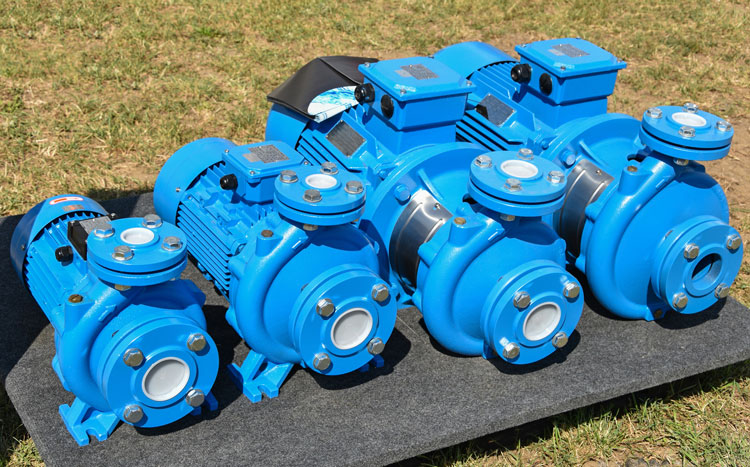by Jim Elsey
For the purpose of this article, I will limit the discussion to an end suction, single stage, centrifugal pump with ball bearings and oil lubrication. Further, we’ll consider the difference between 1,800 and 3,600 rpm units. (Variable speed will be considered in a future article.)
I will initiate the subject by stating there is no 100 percent correct answer 100 percent of the time. As an experienced pump person, my main goal in any installation has always been to design for maximum reliability. This myopic focus is admittedly my own paradigm based on conservative engineering training, my naval submarine service, decades as a provider of pumps, acquired pump knowledge, and mentoring to power plants and refineries.

Benefits of a Slower Speed Pump
It is an industry accepted principle, supported by several studies, that pump wear is at least directly proportional to pump speed. A common quantitative formula is that pump wear is proportional to the cube of the pump speed, which simply translates to a factor of eight. The higher the percentage of solids in the pumped fluid, the more this axiom is true. An oversimplification, perhaps, but it is unequivocally the reason why slurry pumps are big and slow in lieu of small and fast.
Two of the biggest destroyers of Centrifugal pumps are bearing and mechanical seal failure. Many of these failures can be attributed to the phenomena of shaft deflection. In this case, shaft deflection is created by unbalanced hydraulic radial forces on the impeller as a result of operating the pump away from its best efficiency point (BEP). Deflections are simply a shaft bending that occurs twice per one revolution. At 3,600 rpm a shaft will deflect 7,200 times a minute, while the 1,800 rpm shaft will deflect only 3,600 times per minute. An operating pump shaft can also exhibit a phenomena called “whip,” which manifests as another sort of deflection, but the root cause in this instance is impeller imbalance. As a side note, understand that broken pump shafts are commonly due to cyclic stress.
In the case of shaft deflection, the shaft is not permanently bent, but it does deflect in dynamic operation. If you were to disassemble the pump and check the static shaft, it would measure as straight. These deleterious deflections are assuredly the principle reason for most mechanical seal failures. And while contaminated lubrication contributes more to bearing failure than shaft deflection, the deflections do bring undesired forces and fatigue to the bearings. In the formula for calculating the expected life span of ball bearings, the operating speed is a main factor. Bearing life expectation L-10 is inversely proportional to speed.
One of the more common reasons for using lower speed pumps is the net positive suction head required (NPSHR) factor. An 1,800 rpm pump will require substantially less NPSH for the same hydraulic conditions as the 3,600 rpm machine. Normally the requirement will approach half of the high speed pump value and often more. The higher the NPSH margin (available NPSH as compared to required NPSH), the better the pump reliability will be. Inadequate NPSH leads to cavitation, which creates impeller erosion (imbalance), hydraulic pulsations and mechanical vibrations.
Pump noise will be substantially less on lower speed pumps. Published noise levels are based on log scales, and the major contributor in most cases is the motor, not the pump (mostly due to the cooling fan). Actual noise levels in the field will be different than published data due to in situ geometries and unique ambient conditions. This is based on a properly selected pump operating within 25 percent of BEP.
As pump casing sizes get bigger in diameter, most manufacturers incorporate a dual volute design somewhere in the neighborhood of 12 to 14 inches. The dual volute design significantly reduces radial thrust. While a dual volute pump costs more to manufacture, the consequential reduction in radial thrust will contribute greatly to reliability.
